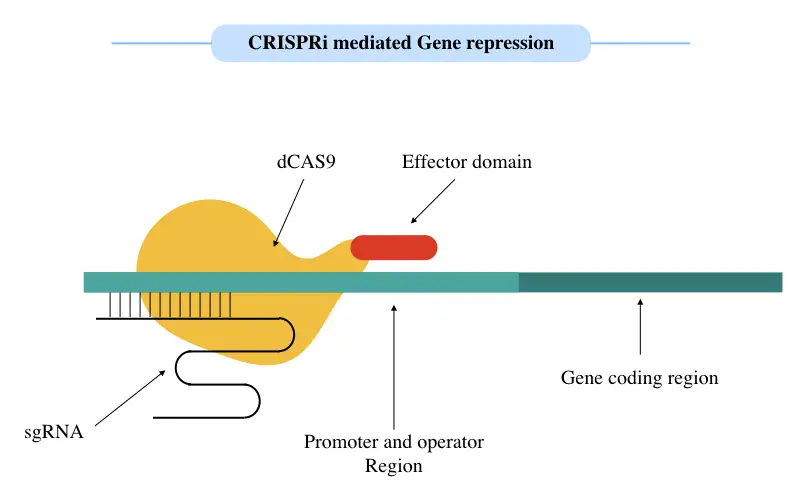“The Year 2020, was the grand time for Ataxia treatment based on the CRISPR-based technology. Three consecutive studies on Ataxia type 1, type 2 and type 3 proving the CRISPR as a future treatment option for the group of progressive neurological conditions.”
Salvatori F et al. in 2020 explained the potential therapeutic use of the CRISPR cas9 technology in the treatment of Ataxia type 1 by silencing the ATXN1 gene and suggested that the precise tool would be a treatment option in the near future for various types of Ataxia.
Moreover, other separate studies from 2018 to 2020 on different ATXN genes also support the fact. But the foolproof study using CRISPR for treating Spinocerebellar Ataxia type 2 has yet not come.
Let’s find out what’s going on around ataxia type 2 and CRISPR in its treatment.
Read more: Applications of CRISPR-CAS9 in Medical Science, Diagnostics, Research, Plant Biology and Agriculture.
Key Topics:
Ataxia type II:
Broadly, Ataxia is a type of spinocerebellar progressive triplet repeat expansion disease. The condition has a high genetic anticipation base, showing a progressive increment in severity over time.
Specifically, the SCA2 or ataxia type 2 is classified also as a progressive neurological condition involving abnormal expansion of the CAG triplet repeat of the ATXN2 gene. The present condition is a unique genetic abnormality involving the number of CAG repeats.
Normally, the ATXN2 has 22 CAG repeats which can expand up to 31, however, its expansion beyond 32 will surely cause serious health problems, associated with muscle coordination and balance.
Common symptoms are
- Jerky muscle movement
- Muscle wasting
- Uncontrolled muscle movement
- Uncontrolled eye movement
- Speech and swallowing difficulties involuntary movements and muscle stiffness
- Etc
Though the whole group of Ataxia progressive disorders is the rarest genetic condition, Ataxia type 2 is common among. As the number of repeats >32 increases, the severity of the disease also increases and follows the classic model of genetic anticipation.
Spinocerebellar ataxia type 2 is an autosomal dominant condition in which a single copy of a dominant mutant gene is sufficient enough to cause the disease. Although, intermediate repeat numbers show mild symptoms or carriers for the condition which has been categorized as permutation.
The ATXN2 gene located on the human chromosome 12 encodes a protein ataxin-2, present in the cytoplasmic cell fluid and in all bodily cells whose function is still unknown.
The increment of repeat CAG also increases gene expression of the ATXN2 gene and overproduction of the ataxin-2 protein, which possibly causes various neurological problems.
CRISPR-CAS9 in the treatment of Ataxia 2:
CRISPR-Cas9- mediated gene silencing is considered as one of the best options to treat the present condition and that the previous research also explains. Basically, the concept focuses on reducing the expression of protein produced.

The problem arises when the CAG repeat of the ATXN 2 gene expands above the normal level. If we somehow cut that expanded part off, we can reduce the expression of the faulty protein.
The CRISPR-Cas9 has a unique property of cleaving DNA at a precise location, the off-target effects are comparatively very low. nuclease-CAS9 guides the sgRNA to the target location to cleave off the DNA.
CAS9, CRISPR and sgRNA are three integral parts of the technique that collectively performs gene editing. The sgRNA is an artificially synthesized guided RNA having complementation with the target location.
The sgRNA provides navigation to CAS protein which when finds the binding (between sgRNA and target DNA), performs a double-stranded cut at two different locations.
Bryan S, Beverly D & Alejandro M (2020) suggested in their research work entitled, “CRISPR/CAS9 gene editing of ATAXIN2 for the treatment of spinocerebellar ataxia type 2.” processing exon 1 of the ATXN2 gene results in effective gene silencing.
Further to this, their findings suggest that the explained Cas nuclease and sgRNA designed for the ATXN2 greatly reduces the expression of the ataxin-2 (faulty) protein in cell lines.
The studies conducted on the mouse models also evident that the role of CRISPR-based gene therapy in treating Ataxia type 2 is empirical. Nonetheless, designating the target location, finding and locating the PAM sequence and designing the sgRNA has been important for the therapy.
“Gene silencing is a process to reduce the expression of a gene by mRNA processing.”
Another study published in the same year supports evidence on the potential uses of CRISPR CAS9 in treating not only Ataxia type 2 but also in other types of Ataxia as well. One such study was conducted by Salvatori F & Pappada M et al. (2020) for spinocerebellar ataxia type 1.
On a technical note, their research suggests that G3 and G8 are the two most efficient sgRNA power up the CRISPR system and reduce the expression of ATXN 1 gene by processing exon 9 and which reduces protein production many folds.
Recent advancements of the technique in 2021 postulated that the system is so powerful than we think, it has a great precision rate and can correct other types of ataxia genes too.
He L and Wang S et al. (2021) performed gene silencing on SCA3-iPSCs cell types using CRISPR-CAS9 mediated homologous recombination. Their results also suggest that the present technique is significant enough to treat ataxia.
Unfortunately, only a single study has been reported on CRISPR-CAS9 gene therapy for ataxia type 2 which is not sufficient to conclude its efficiency specifically for type 2.
It should be noted that each study reviewed here was performed on isolated cell lines or on model organisms but not on patients. Cumulative results aren’t found yet. CRISPR has effective gene silencing power though editing may produce serious side effects.
Besides, the CRISPR itself isn’t efficient for silencing compared to RNA interference or other silencing techniques. The process is tedious, time-consuming and costlier than other methods and that’s why its future especially for neurodegenerative disorders like ataxia type II has not been yet clear.
Wrapping up:
Ataxia type 2 is a serious muscle, neurological and degenerative genetic disease. CRISPR technique has provided promising results but yet not enough for clinical trials.
Ongoing research suggests that gene-editing techniques will become an effective treatment option for many genetic conditions in the future.
Sources:
SIMPSON, B., DAVIDSON, B., & MAS MONTEYS, A. (2020, October 29). CRISPR/Cas9 gene editing of ATXN2 for the treatment of spinocerebellar ataxia type 2. WO2020219870 CRISPR/CAS9 GENE EDITING OF ATXN2 FOR THE TREATMENT OF SPINOCEREBELLAR ATAXIA TYPE 2.
Ashizawa T, Öz G, Paulson HL. Spinocerebellar ataxias: prospects and challenges for therapy development [published correction appears in Nat Rev Neurol. 2018 Dec;14(12):749]. Nat Rev Neurol. 2018;14(10):590-605. doi:10.1038/s41582-018-0051-6.
He L, Wang S, Peng L, et al. CRISPR/Cas9 mediated gene correction ameliorates abnormal phenotypes in spinocerebellar ataxia type 3 patient-derived induced pluripotent stem cells. Transl Psychiatry. 2021;11(1):479. Published 2021 Sep 17. doi:10.1038/s41398-021-01605-2.
Salvatori F & Pappada M et al., (2020). “CRISPR/CAS9-based silencing of the ATXN1 gene in Spinocerebellar ataxia type I (SCAI) fibroblast. bioRxiv- Cold Spring Harbor Laboratory.


